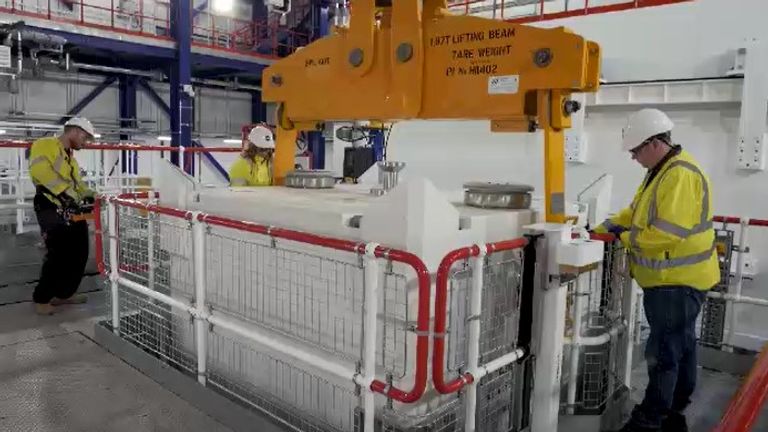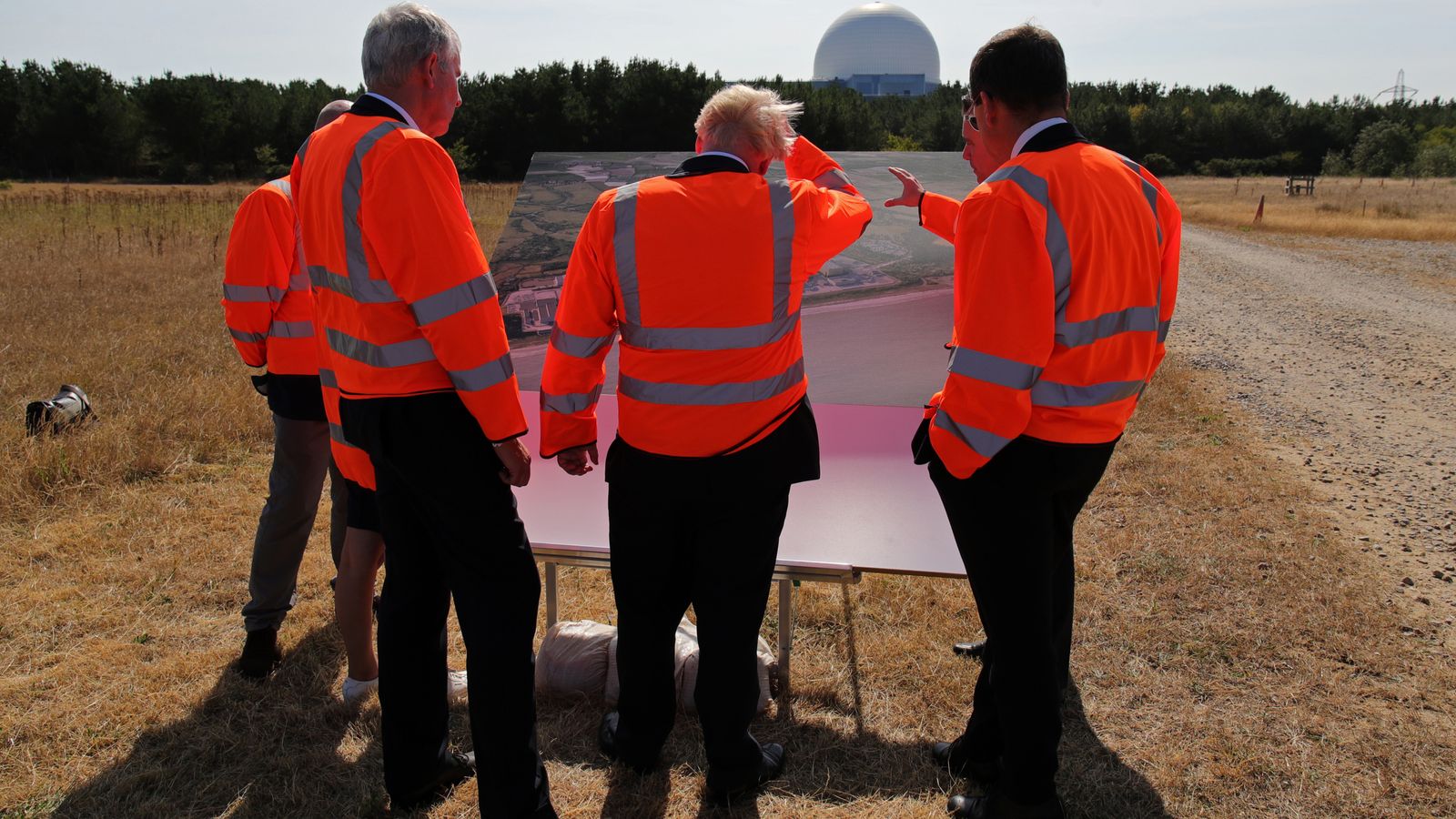[ad_1]
If it wasn’t for the constant beeping from our radiation monitors, the building wouldn’t seem much different from any other ageing industrial site.
But in fact, we’re standing in one of the world’s largest and most unstable stores of nuclear waste left over from the UK’s race to develop nuclear energy and atomic bombs during the Cold War.
The Magnox Swarf Storage Silo (MSSS) at Sellafield in Cumbria has been described as the most hazardous building in Western Europe.
Even Sellafield Ltd, which now manages the site on behalf of the taxpayer, doesn’t dispute the description.
The nuclear regulator, the ONR, has designated the building “an intolerable risk”.
Now engineers are finally getting to grips with it.
We’re watching as they prepare to send a robotic grabber down into one of the waste silos below to fish out some of the first batches of nuclear waste.
Lead glass more than a foot thick shields us and the robot’s operator from the radiation below. It looks like a fairground grabber, only instead of a teddy, the prize is a bucket full of intensely radioactive sludge.
There’s a sense of pride among the team of engineers who designed the British built “retrievals machine” – but also relief.
Finally, they can start emptying the building and moving the waste into a modern store.
“It’s such a significant moment,” said Chris Haliwell who is head of the retrieval programme.
Mr Haliwell has devoted much of his career to emptying the building – considered the only way to make it safe.
The MSSS building was built in the late 1950s to receive waste from the UK’s growing fleet of nuclear reactors.
For decades the waste has been dissolving into an intensely radioactive sludge releasing hydrogen gas into the air above it – a potentially explosive mix that has to be constantly ventilated.
And the building is ageing badly, in 2019, radioactivity began leaking again into soil previously contaminated by a leak in the 1970s.
It won’t be a quick job. The grabber removes less than a cubic metre of waste in any one scoop.
“It’s like emptying a wheelie bin with a teaspoon,” said Mr Haliwell.
The project is expected to take at least 20 years but time passes differently at Sellafield.
Our next stop is the building that will house the repackaged waste from the MSSS building for the next century.
Unlike the decaying concrete of its neighbour, the Box Encapsulation Plant Product Store (BEPPS) is a vast concrete sarcophagus with walls more than two metres thick, served by an underground tunnel and robotic cranes that can shuttle waste in purpose-built boxes into the store without humans having to go anywhere near it.
The echoing tunnel will ultimately link eight vaults that can store the bulk of Sellafield’s waste until a permanent “geological storage” facility is found to put it in forever.
In just a few weeks’ time, the new building will be ready for use. We will be some of the last humans to stand in the tunnel for a hundred years.
Getting waste out of the MSSS building is a big moment for Sellafield Ltd but the costs of dealing with our Cold War nuclear legacy are colossal.
Follow the Daily podcast on Apple Podcasts, Google Podcasts, Spotify, Spreaker
Nuclear decommissioning costs the taxpayer more than £3bn a year. Sellafield alone is projected to cost £97bn to clean up over the next 120 years.
Can the government justify a new nuclear programme if it costs this much to clean up the last one? And can the industry be trusted to clean up, given the costly mess that was left at Sellafield?
“The priority at that time was in fact military and then the expansion civilian nuclear power that left us with legacy challenges,” said Mr Haliwell.
New nuclear plants have to raise money to pay for their own decommissioning so, in theory, at least, the taxpayer shouldn’t be left picking up the bill.
But to ensure trust, “we need to keep our part of the bargain here at Sellafield,” Mr Halliwell said.
[ad_2]










